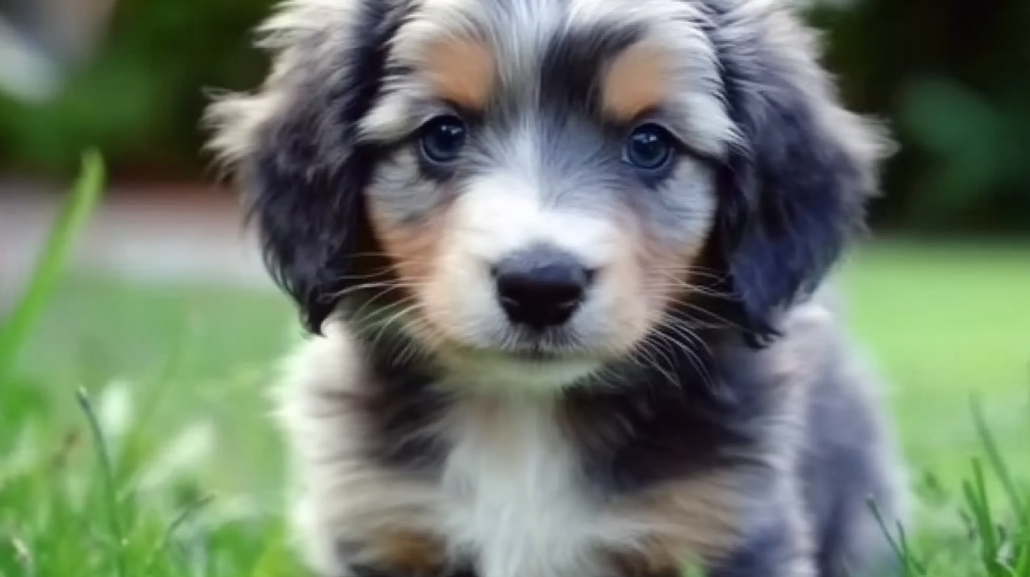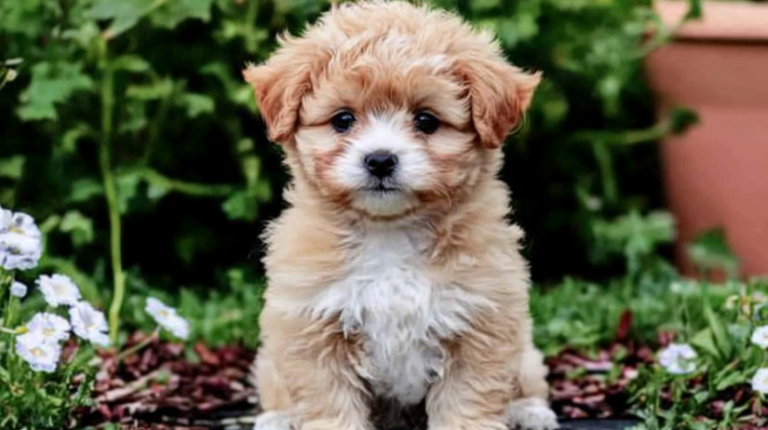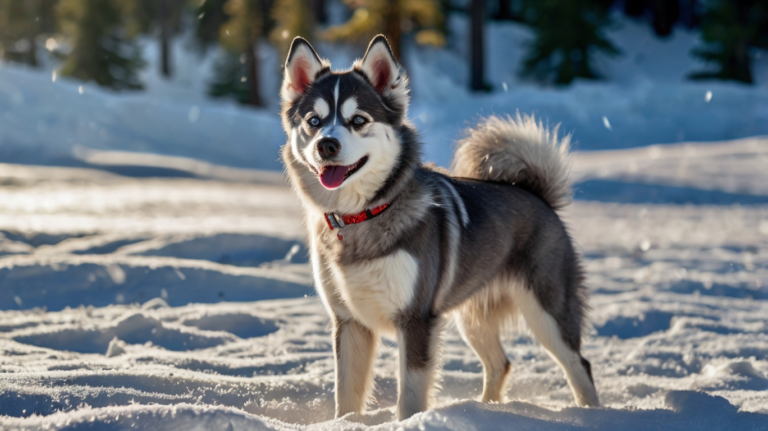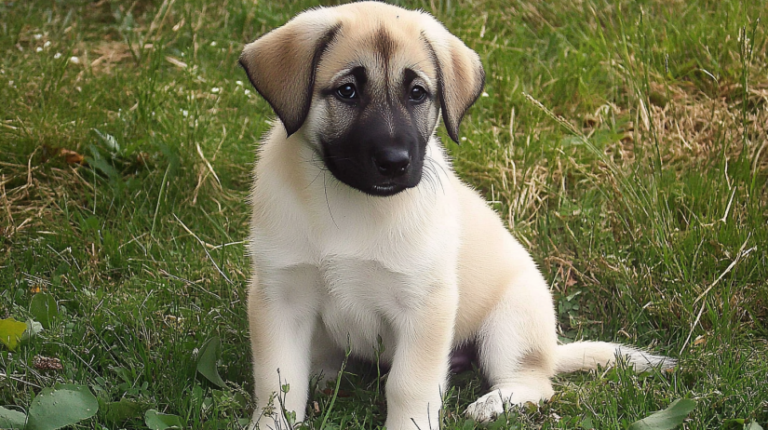Mini Aussiedoodle Puppies: 7 Joyful & Astonishing Secrets
Introduction
Imagine coming home to a bright-eyed, curly-haired furball spinning circles of excitement at your feet. That picture-perfect greeting sums up what life with mini aussiedoodle puppies can look like. These spunky hybrids pack the best traits of Miniature Australian Shepherds and Miniature Poodles into an irresistibly small frame, winning hearts across the country with their brilliant minds and affectionate personalities.
Maybe you’ve seen pictures of mini aussiedoodle puppies sporting merle or parti-color coats, or you’ve watched a friend’s mini doodle excel at agility training. Perhaps you’ve heard they can fit into apartments or suburban homes easily—provided they get enough daily play. Or maybe you’re searching for a dog breed known for intelligence, hypoallergenic coats, and a fun-loving spirit. Whatever fuels your curiosity, this in-depth guide is here to help you determine if mini aussiedoodle puppies are indeed the furry companions you’ve been dreaming about.
Origins and Background
The Australian Shepherd Roots
Despite the name, Australian Shepherds actually developed most of their breed traits in the western United States. They often assisted ranchers with herding sheep, cattle, and other livestock. Over decades, breeders favored the Aussie’s intelligence, agility, and willingness to work, culminating in a dog that thrives on physical and mental challenges. This breed is recognized by the American Kennel Club (AKC) and typically boasts a strong herding instinct, alert personality, and high energy levels.
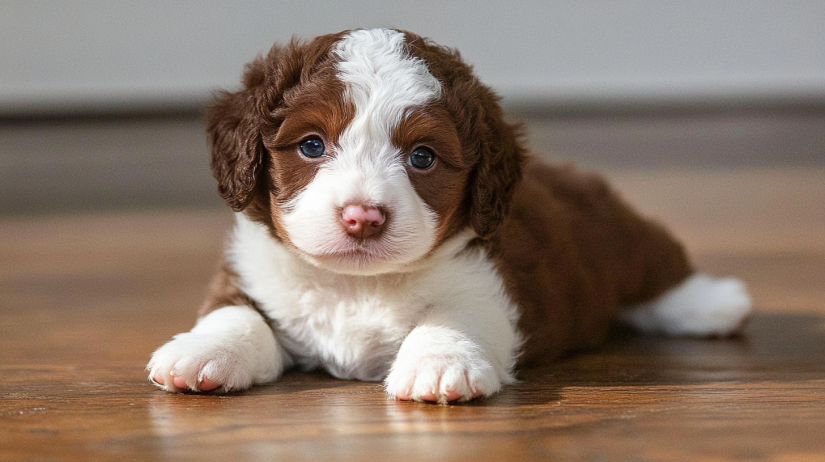
The Poodle Lineage
Poodles, originating from Germany and France, are recognized worldwide for their curly, often hypoallergenic coats and extraordinary intelligence. Miniature Poodles in particular were bred down in size from the Standard Poodle, maintaining that distinct coat but offering a more compact frame for city dwellers or those wanting a smaller companion. Historically, Poodles have excelled in retrieving, circus performances, and specialized tasks due to their remarkable trainability.
The Mini Aussiedoodle Creation
Combine a Miniature Australian Shepherd’s drive and smarts with a Miniature Poodle’s keen mind and lower-shedding coat, and the result is mini aussiedoodle puppies—sometimes referred to as Mini Aussiepoos or Mini Aussie Poodles. While doodles are not purebred dogs recognized by major kennel clubs, their popularity continues to climb among families, singles, and seniors seeking an intelligent, moderately sized companion that adapts well to various lifestyles.
Physical Characteristics
Size and Weight
Though every dog is unique, mini aussiedoodle puppies often weigh between 15 and 35 pounds once fully grown, standing around 12 to 17 inches tall at the shoulder. Females can be slightly smaller than males, but overall size will depend largely on which genetic traits they inherit from each parent.
Coat Types and Colors
One hallmark of mini aussiedoodle puppies is their eye-catching variety of coat colors and textures:
- Merle (Blue or Red): Swirled patches of black, gray, or red
- Tri-Color: Black, white, and copper combos reminiscent of the Aussie parent
- Solid: Black, cream, chocolate, or even parti patterns
- Curly or Wavy Coats: Thanks to Poodle genes, many coats are curly or at least wavy, often touted as lower-shedding
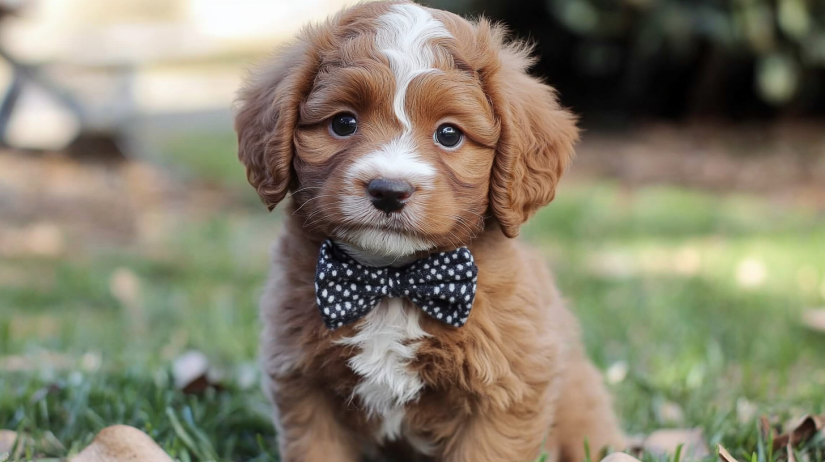
Bear in mind that while many minis do shed less, no dog is entirely hypoallergenic. Allergies can vary depending on the individual’s reaction to pet dander and saliva rather than just fur.
Table: Approximate Growth Timeline
Below is a general timeline of a mini aussiedoodle puppy’s development. Actual rates can vary, so consult your vet for personalized insights.
| Age | Weight Range | Milestones |
|---|---|---|
| 8–10 Weeks | 3–6 lbs | Transition to new home; start basic socialization |
| 3–4 Months | 5–10 lbs | Rapid growth spurt; teething; short training sessions |
| 5–6 Months | 8–15 lbs | Gains agility; refines motor skills; “teen” phase |
| 7–9 Months | 10–20 lbs | Growth slows; more advanced obedience possible |
| 1 Year+ | 15–35 lbs (fully grown) | Reaches adult size; maintain consistent routine |
Personality and Temperament
High Intelligence
Because both the Aussie and Poodle are among the most intelligent dog breeds, mini aussiedoodle puppies typically demonstrate impressive problem-solving skills and pick up commands quickly. This brainpower can be a joy for dog owners who love teaching tricks and advanced obedience, but it can also mean your puppy devises clever ways to open cabinets or escape pens if bored.
Energetic and Playful
Expect a moderate-to-high energy level from mini aussiedoodle puppies, especially during puppyhood and adolescence. They may race around the living room chasing squeaky toys or rope you into lengthy fetch sessions in the backyard. Provide daily outlets for their energy—like brisk walks, puzzle toys, or agility practice—to keep them mentally and physically satisfied.
Affectionate Yet Independent
While your mini doodle may love snuggling and shadowing you around the house, they generally retain a streak of independence from their herding background. They enjoy interactive bonding but also appreciate exploring on their own. With consistent socialization, they often do well with families, older children, or active retirees who can dedicate time to meaningful engagement.
Bringing Home Your Mini Aussiedoodle Puppy
Choosing a Reputable Source
When seeking mini aussiedoodle puppies:
- Reputable Breeders: Look for health-tested parents, in-person visits, and transparent lineage records.
- Rescue Organizations: Occasionally, you might find an Aussie or Poodle mix at a shelter. Check breed-specific rescues or doodle rescues.
- Online Scams: If a deal seems suspiciously cheap or the seller avoids letting you see the puppy first, proceed with caution.
Puppy mills and unethical breeding practices can lead to health or behavioral issues down the road. A trustworthy breeder or rescue group will prioritize the puppy’s well-being, ensuring they’re vet-checked and placed in suitable forever homes.
Preparing Your Home
Before your mini aussiedoodle puppy steps paw in your house, gather essentials:
- Crate and Bedding: Offer a cozy den-like space.
- Quality Puppy Food: Ask your vet about balanced nutrition.
- Food and Water Bowls: Stainless steel or ceramic options are more durable and hygienic.
- Chew Toys: KONG toys or other safe chewables help relieve teething urges.
- Puppy Pads: If you plan to start with indoor potty training.
- Gates or Playpens: Restrict access to off-limits zones, safeguarding wires and breakables.
First Days at Home
The initial days can shape your mini aussiedoodle puppy’s perception of you and their environment:
- Create a Calm Setting: Avoid overwhelming them with too many new people or loud noises.
- Offer Consistency: Set feeding times, potty breaks, and short play sessions to establish predictability.
- Encourage Bonding: Use gentle praise, treats, and lap time to build trust and security.
Basic Training and Socialization
Early Obedience
An advantage of mini aussiedoodle puppies is that their inherent intelligence makes them highly trainable:
- Positive Reinforcement: Reward good behavior with treats, toys, or enthusiastic praise.
- Short Sessions: A puppy’s attention span may last only a few minutes. Multiple quick sessions daily are more effective than a single long one.
- Consistent Commands: Use the same cue words (e.g., “Sit,” “Stay,” “Come”) so your puppy learns quickly.
Housebreaking and Crate Training
- Frequent Potty Breaks: Take your mini aussiedoodle puppy outside immediately after naps, meals, and vigorous play.
- Crate Familiarity: Introduce the crate with treats and comfortable bedding, letting the puppy venture in and out freely at first.
- Positive Associations: Praise or give a small treat when they go in the crate or do their business outside.
Socialization Must-Dos
Because Aussies can be cautious with strangers if not socialized, mini aussiedoodle puppies need structured exposure to new people, animals, and settings:
- Puppy Classes: Group classes provide a secure and structured space to meet other dogs and their owners.
- Gradual Introductions: Host short meet-and-greets with friends and family. Let your puppy approach on their own terms.
- Varied Environments: Take your puppy to different, puppy-appropriate public places (e.g., quiet parks), ensuring each outing is positive.
Exercise and Activity Needs
Daily Routine
mini aussiedoodle puppies thrive with a mix of mental and physical stimulation. Aim for at least:
- Two Short Walks: 15–20 minutes each, suited to puppy energy levels.
- Indoor Play Sessions: Tug-of-war, fetch, or puzzle toys.
- Brain Games: Puzzle feeders, “find the treat” games, or basic obedience drills.
As your puppy matures, you can extend walks, introduce low-impact agility, or experiment with advanced trick training.
Avoid Overexertion
Although your puppy may seem unstoppable, their joints and growth plates are still developing. Too much high-impact exercise (like jumping from high surfaces or extended running) can stress growing bones. Gradually increase activity intensity, and talk to your vet about safe exercise guidelines for your mini aussiedoodle puppy’s age.
Fun Ways to Engage
- Mini Agility Courses: Set up small obstacles or tunnels in your yard.
- Canine Sports: Some mini doodles excel in rally obedience or freestyle.
- Interactive Toys: KONG Wobbler or puzzle bowls can keep them entertained while you’re busy.
Grooming and Coat Care
Coat Types and Maintenance
Given their partial Poodle heritage, mini aussiedoodle puppies often have low- to moderate-shedding coats that may be curly, wavy, or straight. Regardless of texture, regular grooming is crucial:
- Brushing: Aim for 2–3 times a week to prevent tangles, especially in wavy or curly coats.
- Bathing: Every 4–8 weeks or as needed, using gentle dog-friendly shampoo.
- Professional Trimming: Many doodle owners schedule grooming sessions every 6–12 weeks to keep the coat manageable.
Nail Trimming and Ear Checks
- Nails: Trim every 2–4 weeks or whenever you hear them clicking on the floor.
- Ears: Mini aussiedoodle puppies can be prone to ear infections if hair growth traps moisture. Check weekly for redness, odor, or discharge; gently wipe the outer ear with a vet-approved solution if needed.
Dental Health
Since smaller dogs can be prone to periodontal issues, brush your puppy’s teeth weekly (or daily if possible) with canine toothpaste. Dental chews or water additives can also help reduce tartar buildup, but always check with your vet before introducing any new product.
Health Considerations
Common Health Issues
Despite being generally healthy, mini aussiedoodle puppies can still inherit or develop certain conditions. Potential concerns include:
- Hip Dysplasia: Malformed hip joint leading to pain or arthritis.
- Progressive Retinal Atrophy (PRA): Degenerative eye disease that can cause vision loss.
- Epilepsy: A neurological disorder characterized by seizures.
- Patellar Luxation: Kneecap displacement common in smaller breeds.
Regular vet checkups and a healthy lifestyle (balanced diet, exercise) can help manage or reduce risks. Many breeders test their parent dogs for these conditions—another reason to choose a reputable source.
Vaccinations and Preventatives
Your puppy should follow a vet-recommended vaccination schedule that may include:
- Distemper-Parvovirus Combo
- Rabies
- Bordetella (Kennel Cough)
- Canine Influenza (depending on region)
Parasite prevention (fleas, ticks, heartworms) is also crucial. Consult your veterinarian about the right preventative measures for your mini aussiedoodle puppy, taking local climate and parasite prevalence into account.
Spaying/Neutering
Spaying or neutering can prevent unintended litters and may offer certain health benefits, like reduced risk of some cancers. Some vets recommend waiting until your puppy is near physical maturity—particularly for medium-sized or larger dogs—to allow hormones to aid in healthy bone growth. Discuss spay/neuter timing with your vet, factoring in your puppy’s age, breed mix, and overall health.
Living with Mini Aussiedoodle Puppies: Family & Environment
Family Dynamics
mini aussiedoodle puppies can fit into a variety of households, from singles in apartments to families with children. They’re typically gentle if socialized around kids, although toddlers must learn to handle them gently—mini aussiedoodle puppies might not appreciate rough tugging or ear-pulling. Always supervise interactions between young children and dogs to ensure mutual respect.
Apartment vs. House with a Yard
- Apartment Living: Perfectly doable if you commit to daily walks, mental challenges, and short training sessions. Their smaller size usually suits compact dwellings better than larger doodles or Aussies.
- Home with Yard: An enclosed yard gives your puppy more freedom to romp around. Just be sure it’s secure—some mini doodles might try to slip through small gaps or climb low fences.
Interaction with Other Pets
With early socialization, mini aussiedoodle puppies often coexist well with other dogs or even cats, thanks to their friendly dispositions. Still, monitor introductions carefully. Some Aussie background can manifest as herding instincts, prompting them to nip at other pets’ heels. Gentle guidance can redirect these behaviors into appropriate play.
Real-Life Anecdotes: Mini Aussiedoodle Success Stories
Case Study 1: Tucker’s Agility Triumph
Tucker, a 10-month-old mini aussiedoodle puppy, exhibited boundless energy from day one. His owners enrolled him in a beginner’s agility course at 6 months. Within weeks, Tucker was confidently mastering jumps, tunnels, and weave poles—demonstrating just how quickly a bright doodle can pick up new sports. With consistent practice, Tucker eventually competed in local agility trials, winning hearts with his enthusiastic tail wags.
Case Study 2: Bella’s Gentle Therapy Mission
Bella began her life as a timid mini aussiedoodle puppy in a quieter household. Her owner recognized Bella’s calm demeanor and introduced her to therapy dog training, focusing on gentle interactions with seniors in assisted living. Thanks to early socialization, Bella overcame initial shyness and now visits patients weekly, offering comfort and forging beautiful bonds.
These examples underline how, with patience, supportive environments, and dedicated training, mini aussiedoodle puppies can excel in a range of roles—from active canine sports to heartwarming therapy work.
Frequently Asked Questions (FAQs)
Below are relevant user questions about mini aussiedoodle puppies.
What’s the average cost of a mini Aussiedoodle puppy?
Breeders may charge anywhere from $1,000 to $3,000+ for mini aussiedoodle puppies. Rarity of coat color or extensive health checks can affect pricing. Stick with reputable sources to ensure a well-bred, healthy pup.
Do mini Aussiedoodles produce fewer allergens?
Yes, many mini aussiedoodle puppies shed less and can be gentler on allergies. However, total hypoallergenic status isn’t guaranteed. Interact with one to gauge any allergic reaction.
What is the adult size of a mini Aussiedoodle?
Expect mini aussiedoodle puppies to mature between 15–35 pounds. Height commonly falls in the 12–17 inch range. Their final size depends on each parent’s proportions.
What’s the ideal activity level for a mini Aussiedoodle puppy?
Aim for around half an hour to an hour of exercise each day. Mini aussiedoodle puppies love mental challenges like puzzle feeders. Keep sessions varied to channel their energy productively.
Do mini Aussiedoodle puppies get along with children?
Yes, they often enjoy bonding and having fun with children. Mini aussiedoodle puppies might show mild herding behaviors, so guide them kindly. With oversight, they can form loyal, fun relationships with younger family members.
How should I maintain a mini Aussiedoodle’s coat?
Frequent brushing keeps mats away, especially with curly coats. Mini aussiedoodle puppies often benefit from periodic pro grooming. Don’t forget routine ear cleaning, nail trims, and dental care.
Conclusion
Bringing mini aussiedoodle puppies into your life can mean endless fun, plenty of training escapades, and loads of unconditional love. These small but spirited dogs boast an intelligent spark, inherited from both the Mini Aussie and Mini Poodle. Although they require consistent mental stimulation, regular grooming, and a fair dose of daily exercise, their affectionate natures and adaptability make it all worthwhile. If you’re prepared to invest the time and energy into raising a bright-eyed, curly-coated sidekick, you may find that mini aussiedoodle puppies are precisely the devoted companions you’ve been seeking. Ready to share your experiences, ask a question, or simply gush about your doodle? Leave a comment below—we love hearing from fellow pup enthusiasts!

